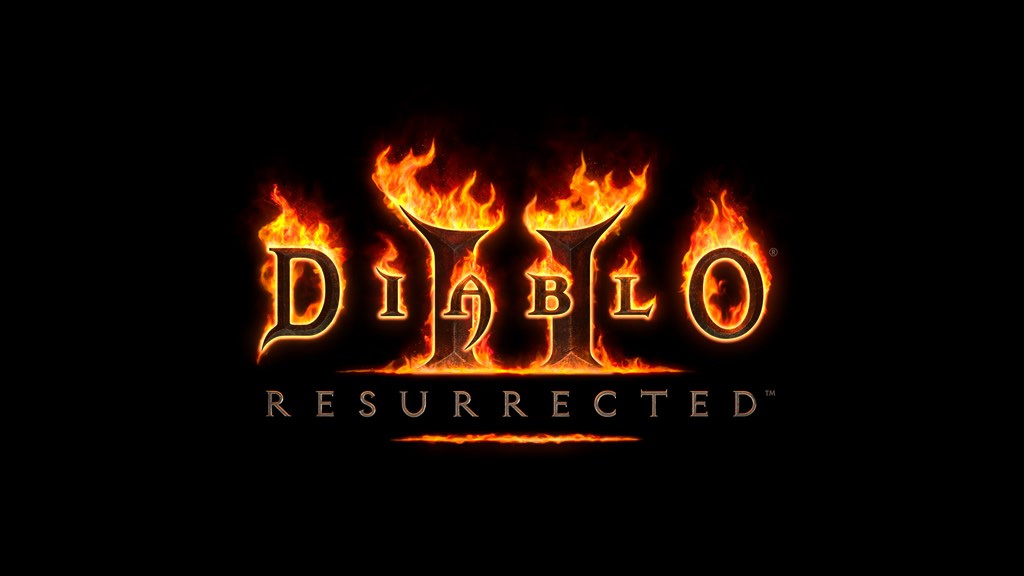
Diablo 2 will be a completely new experience for console players. Blizzard has hopefully managed to bring the D2 magic from the PC to consoles with not too much of a compromise.
In an update today, they have outlined their approach to the console port and it covers a few key areas such as looting, movement, and abilities.
There’s also an update for Switch players as they state that 4 players will be the max number on Switch. Read on for the full update covering these Diablo 2 Resurrected console features.
This remaster is a labor of love, crafted to stir nostalgia in veteran players and introduce new players to the world of Sanctuary. In this development journey, we strived to build the game as players remember, rather than what it actually was. For instance, graphical improvements are intended to authentically represent the original game, and it’s only when you toggle to the Legacy mode and look back at the original graphics that you can appreciate the evolution forged from this title. Then there are the small details, like the sound of a potion being drank, or the way something is drawn on the mini-map, or even the way monsters appear when a character enters a dark room, all minor elements that contribute to the fond memories of the original experience. When we developed this game and decided to bring it over to the Xbox, PlayStation, and Nintendo Switch systems, it wasn’t just the game balance that needed to be exact, but other subconscious elements players may not have realized when playing the original title over two decades ago.
So, what happens when we bring the game to a platform it has never existed on before? Bringing a game initially built for keyboard and mouse on a PC to console brought up many questions that we needed to answer, especially with a console player’s playstyle in mind. Because our vision is to preserve the classic experience, we started with what we couldn’t change. Having cross-progression gave us a robust set of restrictions and guidelines to adhere to. Because of this, while we couldn’t make any game changes, we focused on changing how the content can be experienced on a new platform.
The first and most obvious change is the way a console player plays the game, namely a controller. With a keyboard and mouse, the player acts as an “eye in the sky” telling their character what to do and where to go by clicking somewhere. Do you perform a ranged ability on a monster? Do you walk over to a chest and open it? Perhaps you open a door? With the mouse, the players’ primary input is a click that conveys aiming or a specific ability or action. The game then guides the character to the place where it can perform the action, finding a path for you. However, on a controller, the player more directly acts as their character. This starts to have serious ramifications at many levels for design—but to our players, it all just needs “to work”.
Movement on Controller
When playing on a controller, movement is bound to the thumb-stick. So, the player, rather than the game, will direct where the character moves. For this to work, we turned off the game’s pathfinding on console and as a result, players can now travel the places the game would have never guided you before. An example of this is a player now being able to run their character into a wall or move against collision objects. With this freedom of movement, it’s easier to avoid attacks from enemies. Beyond determining where to go, you also need to determine how fast you go. Diablo II has a stamina framework. This implies that there are two methods of movement, walking and running. At the point when your stamina drains, you can no longer run. We wanted to have this framework work in parallel with players’ assumptions that when you push the thumb stick a bit, you move a modest amount, and when you push it as far as possible, you move at maximum speed. Walking gives your character better stats in the game, so it was critical we made it simple for players to control this. We went with a toggle as it preserved the conscious decision of opting to walk rather than run. This was imperative for looting, however more on that later.
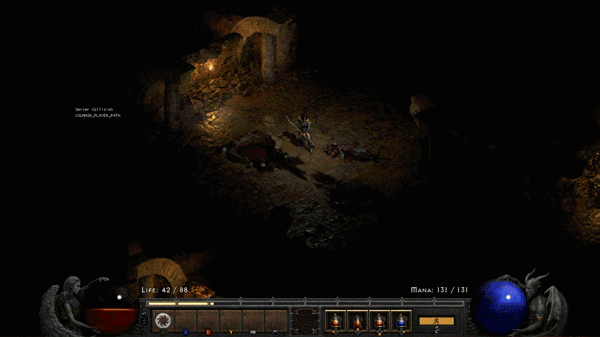
Targeting on Controller
The next substantial contrast when not having a mouse is not having cursor. This means you don’t have a way to direct the game on what to target and attack. To address this, with a thumb stick on the controller, we are continually examining the playfield with an enormous cone, and prioritizing targets at many levels, including monsters, items, objects you can interact with, different players, your corpse, and more. Additionally, the priorities are tweaked by class. An example of this is the Necromancer. The Necromancer prioritizes corpses more than other classes do. At one point we tried showing a player all the different targeting options, but it was incredibly overwhelming on the HUD. So, we made the decision to just show the player their classes’ primary target. Ultimately, even though we don’t show a corpse being highlighted, the nearest one is selected (because it’s closest) should the player trigger an ability that requires a corpse.
Looting on Controller
Plundering the foes you’ve killed is just as important as killing them. Players normally loot with keyboard and mouse by holding a key to see the item’s label, and afterwards, they would click on the name. For some, holding a button on controller can be uncomfortable, so we eliminated the need to hold down the item label button (although it’s still present). When utilizing a controller, item names are revealed by two factors: time and distance. So, if an item is close to a player, it will always be visible. What’s more, when an item drops, the name of the item will display on the screen for a brief amount of time. Our next challenge was to decide how a player picks the item up. Using a controller, it just seemed well and good to have the player stroll over the item. However, this proved to be quite difficult when a monster would detonate into a trove of loot, yet the player just needed that one specific item. Eventually, we added the ability for players to pace themselves slowly over loot and stop in the middle of various items on the ground so they could loot the item of their choice, making the looting experience undeniably more open and less hindered.
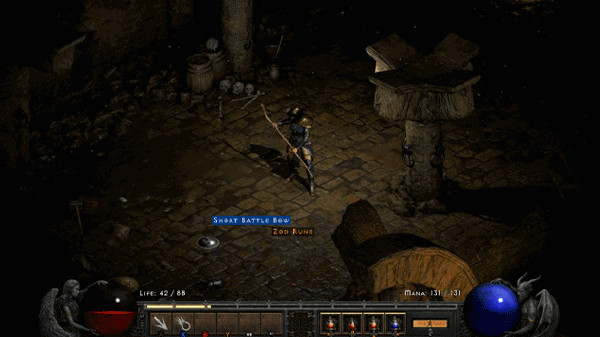
Abilities on Controller
Here we realized we need to meet Diablo III players’ expectations given their previous console experience. In the original Diablo II, a player had two buttons: left and right mouse click. To access quite a few different abilities, players use hotkeys to rapidly remap these two buttons. With a controller, this was adjusted to not remap, but to have buttons straightforwardly trigger the abilities. At that point, we show these abilities in a similar fashion to Diablo III, in a “tray” on the lower part of the HUD. In any case, considering that players can have a substantial number of abilities, we’ve allowed players to hold left trigger to give the player access to another six slots, effectively providing 12 slots to dispatch multiple abilities.
Balancing on Controller
A regular challenge with the controller is that we have far less buttons on a controller than a keyboard, so we invest a lot of time gauging the trade-offs of button mappings to guarantee the most fundamental abilities are simple to reach. Following the Beta, we feel confident we’re taking controller support in a direction that we hope will meet the players’ expectations. We’re still evaluating edge cases and always looking for ways to polish the experience, but we think we’ve found the harmony between a modern feel while preserving the classic mechanics.
In addition to the controller, the next fundamental change is the way a console player experiences the game online, and with other players. Console players are accustomed to forming a party with their friends even before they get into a game. Console players can easily see what their friends are doing, can jump into games and invite their friends into their games. For PC, players have an easy-to use keyboard. The original game used a lobby for players to meet up and play together. Interacting with a stream of comments from players in the general chat was nearly impossible on a controller. Because of this, we made a few changes to player flow.
Playing On-the-Go
One of the great features of the Nintendo Switch system is its on-the-go capabilities – the ability to undock your Nintendo Switch and take your game with you, on a trip or just to another room in the house. This feature and play pattern required some special attention to ensure that switching between offline and online is an easy thing for players to do. As part of this effort, we focused on making the game readable for the portable screen, so playing Diablo II: Resurrected on the go will be a seamless experience.
Players on Nintendo Switch yearning to play with friends online will be able to group up and play alongside up to 4 players. We found that 4-player co-op was the optimal experience when playing on the Nintendo Switch system, especially in handheld mode. We hope players will enjoy all the fun of playing Diablo II: Resurrected on-the-go.
Cross-Progression & Cross-Generational Play
Diablo II: Resurrected has cross-progression, meaning you can keep your progress where you play! Players just need to link their Battle.net account to each supported platform they own D2R on. Once that’s done, your characters loot will become available across all supported platforms and you’ll also be able to retain your level, quest, progress, skills, and talents as well.
On top of cross-progression, Diablo II: Resurrected will also feature cross-generational play. So, if you have an Xbox Series X|S and your friend has an Xbox One, you’ll still be able to party-up in Sanctuary to slay demons. Players on PlayStation®5 and PlayStation®4 consoles will also be able to reap the same benefits as they quest east.
Play Modes
There are many ways for a player to play Diablo II: Resurrected: Online, Offline, Ladder (not available for offline characters), Non-ladder, Hardcore, Expansion, and Non-Expansion. In the original game, the names of these different modes were confusing to new players. If you recall, the original games main menu listed the following options:
- Single Player
- Battle.net
- Gateway: Battle.net
- Other multiplayer
The problem we discovered is many players would start the game in single player and then want to start playing with their friends. However, because they selected single player, which is an offline character, they couldn’t play with friends. We wanted to funnel as many players as possible into a character that they could play with friends. Therefore, we have a giant play button, and the only thing a player has to choose is between offline or online.
Inviting Your Friends
Rather than exchanging information about a lobby, we added the ability for players to just jump right into a game and then once there, invite their friends from their friends list. While practically expected at this point in games, it didn’t exist 20 years ago. In addition to this, we also added the “auto-party” feature. In the original game, the first thing players would do when they joined a game was type “PP” which is short for “Party Please”. Given that nearly every single player would try to find a group with this method, we decided to make it be something that happens automatically with the “auto-party” feature.
Party-Finder
Our team still wanted an easy and streamlined way for console players to play with non-friends, so we built the Party-Finder. This feature is targeted for a player who wants to do a certain activity, such as a quest, or a Baal run, and wants to do it with other players, but may not have their friends online at the time. The Party-Finder will match you with other players of similar level who have also selected the same activity. Following the Beta, we saw a lot of console players requesting more options to better navigate through lobbies. We’ve added Bosses and Zones tabs to the Party Finder, so players can better coordinate on that front. In addition, the Pandemonium event, Uber Diablo events, and PvP/Dueling filters have been added too, so console players can more easily connect to multiplayer sessions related to those activities.
Overall, we needed to focus our console decisions on a very different player than the PC audience. Given that many of our players have had more experience with Diablo 3 on the console, we needed to onboard them into the world of Diablo II in a way that was approachable for them, without changing what made Diablo II the classic that it is. The hope is that we share what was amazing about this timeless classic with a whole new group of players.
–Robert Gallerani, Design Director

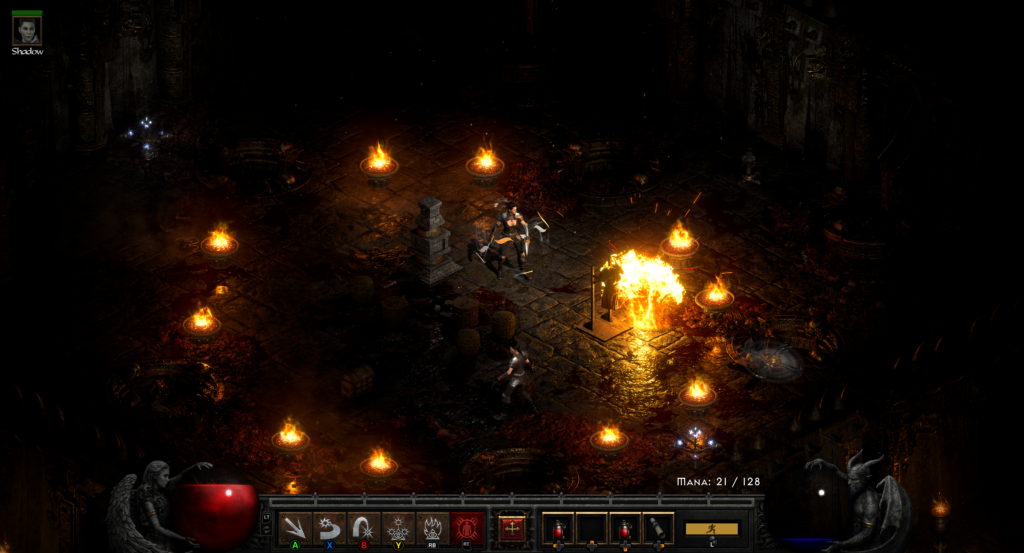
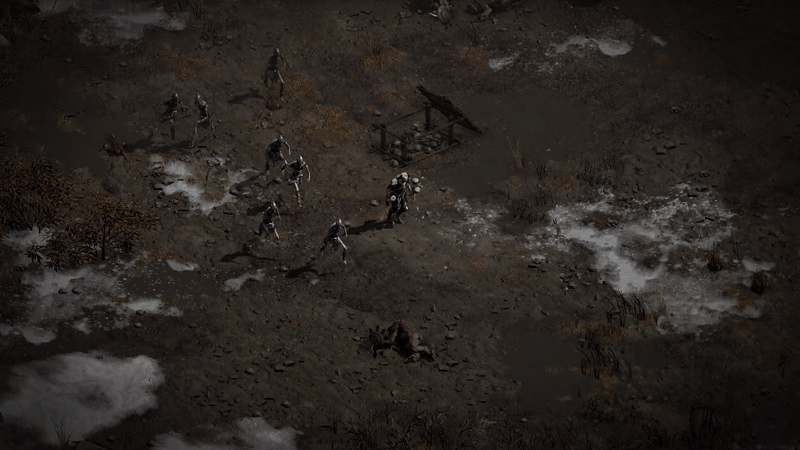
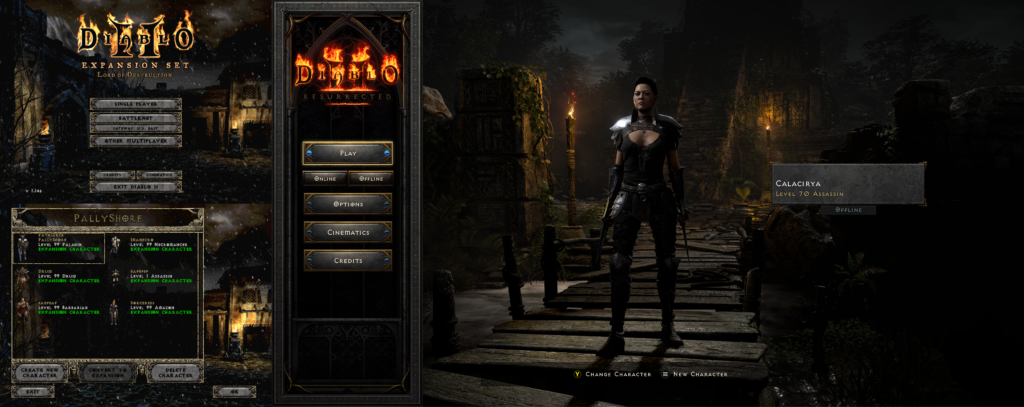
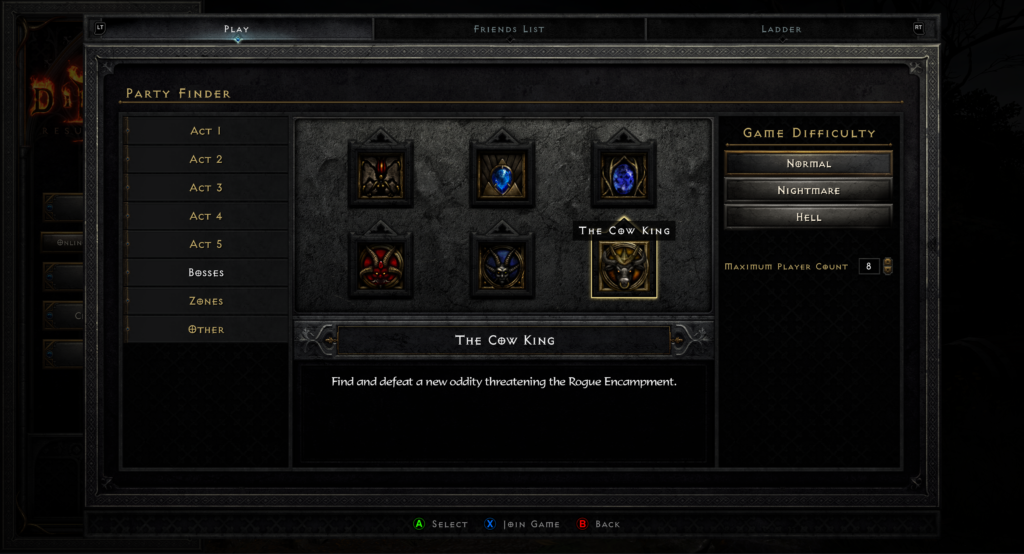
Loading new replies...
New member
Moderator
New member
PurePremium